2024 is going down as a pretty good year if you’re a .32 caliber revolver fan. The folks at Taurus rolled out a slick follow-up to the T.O.R.O. series they introduced in 2023- the latest one being chambered in .327 Federal Magnum.
DETAILS
The 327 T.O.R.O. is built on Taurus’ small frame, with all major components (frame, barrel, cylinder, extractor rod and yoke) made from stainless steel. It features a three-inch barrel; Taurus refers to small frame guns so equipped as “Defenders.” It’s the same size as an 856 T.O.R.O., but the cylinder is chambered for six rounds of .327 Federal Magnum.
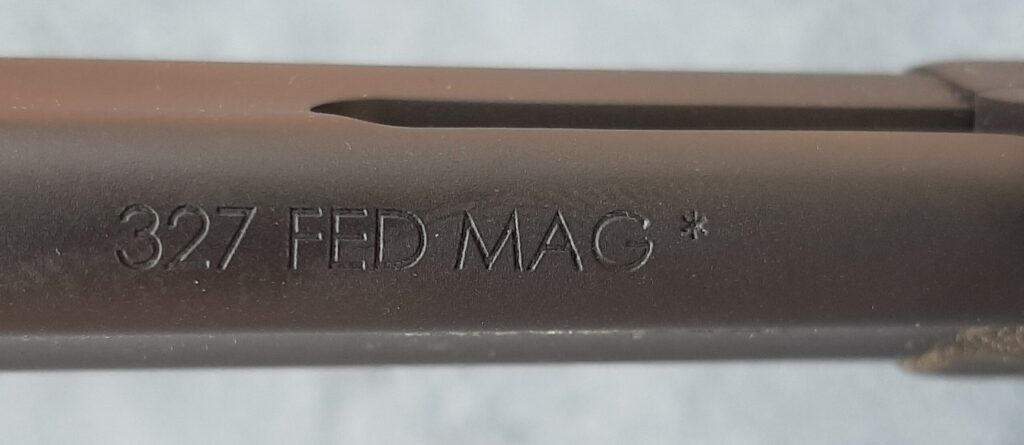
The T.O.R.O. designation means that the top strap is drilled and tapped for Taurus’ clever optic mounting plate which will accommodate a small optic with the Shield RMSc or Holosun “K”footprint. It ships with the plate, two screws to secure it to the frame, and two different sizes of screws to mount an optic to the plate.
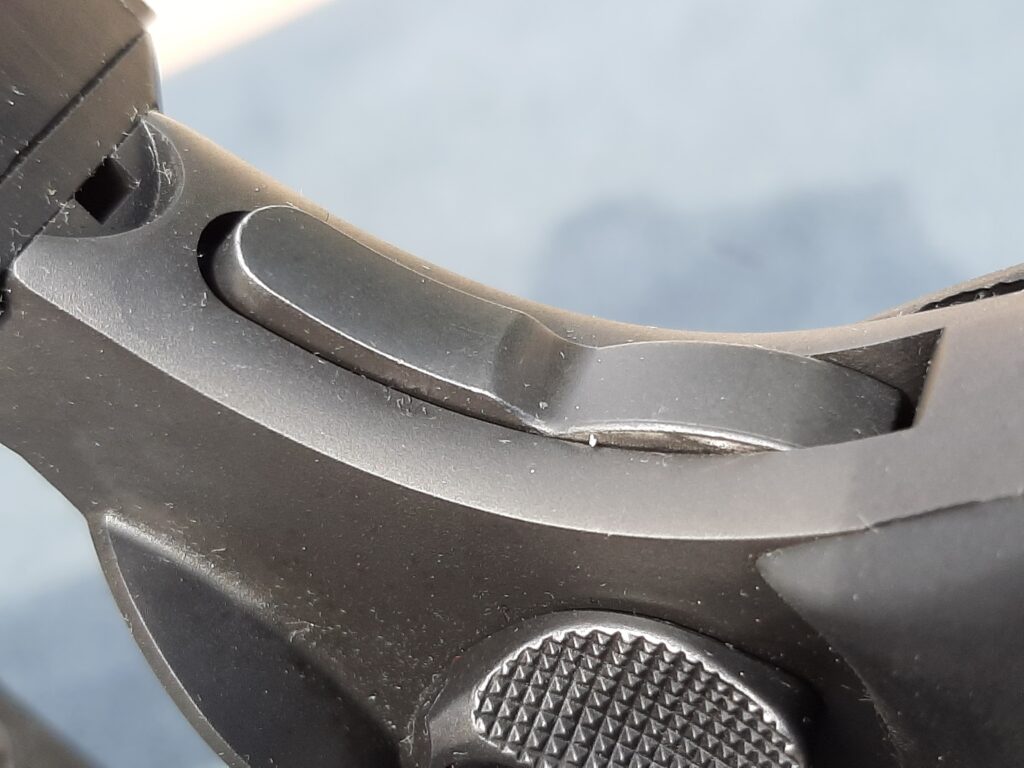
The gun has an all-business matte black finish with familiar Taurus branding on its exterior. The model number “327 CH” is displayed beneath the serial number on the right side of the frame. The “CH” designation indicates that the revolver is equipped with a concealed hammer. That feature is uncommon on Defenders: only the 905 TALO edition 9mm revolver shares the branding (The Executive Grade model has a concealed hammer, but the model number on it is simply “856”). In Taurus terminology, “concealed hammer” means “bobbed hammer”. The hammer spur is removed, and the body of the hammer protrudes minimally from the frame when it’s at rest. The concealed hammer models are double action only and cannot be cocked for single action fire. The 327 maintains standard issue Defender features like the Ameriglo tritium front sight and the Hogue Monogrip. Also, the proven smooth faced trigger, full length extractor rod with rounded tip, and ergonomic thumb piece.
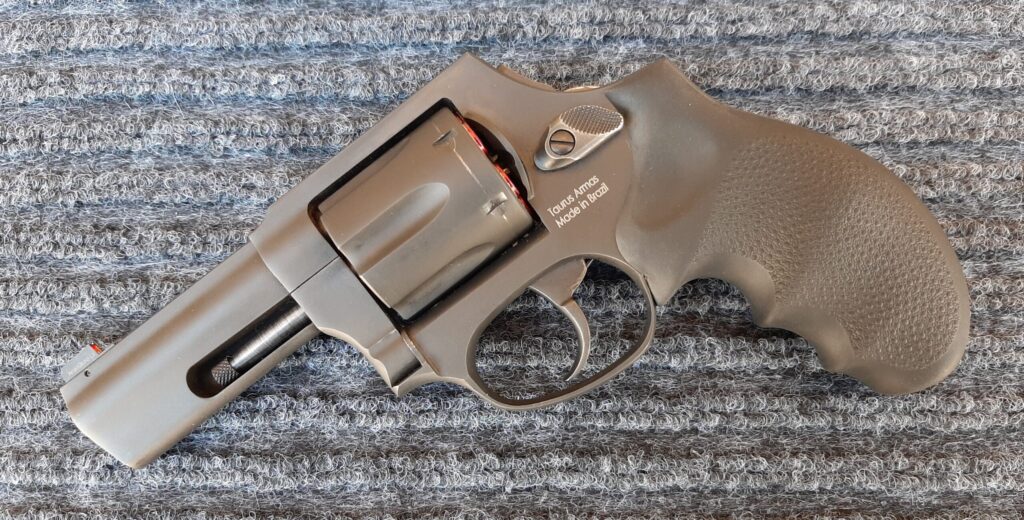
SPECIAL TOUCHES
Opening the cylinder revealed a slight discoloration at the back of each chamber. Closer inspection showed a whisper of a chamfer on each. Dryfiring the gun revealed that it possessed one of the best triggers I could recall on a small frame Taurus. This warranted an email inquisition to the ever-busy Caleb Giddings. He responded that the 327 TORO was considered a “Limited Edition”, and the chamfer was an intentional part of its feature list.
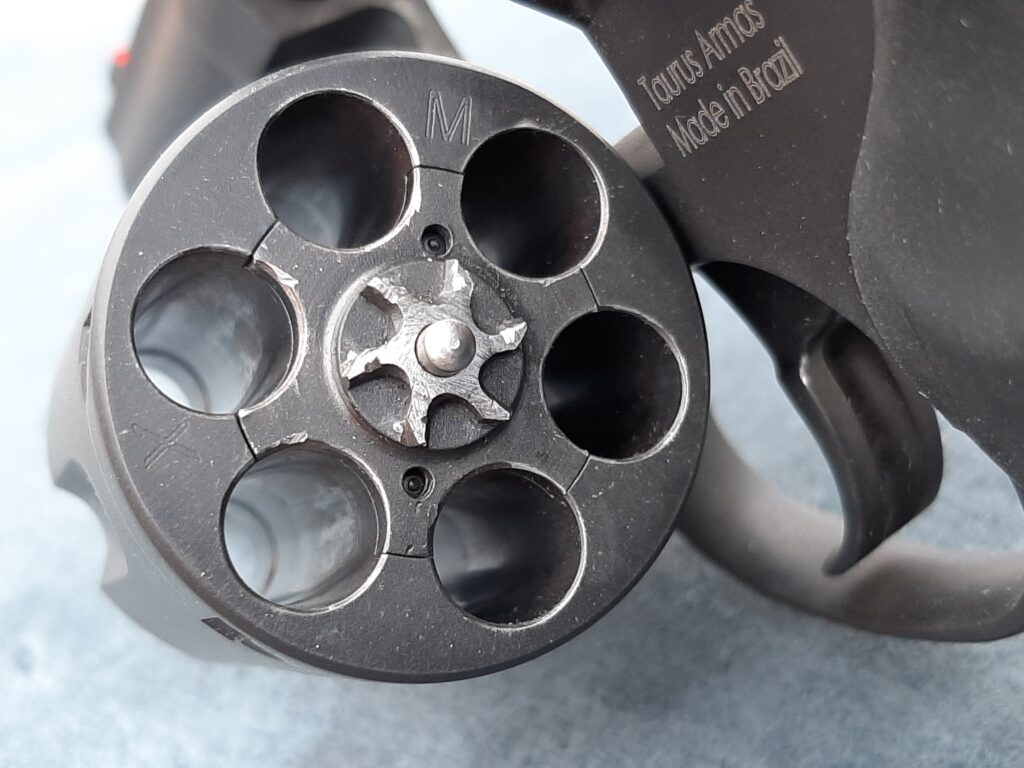
The single action notch is eliminated on the hammer of the DAO gun; this did away with the “hitch” felt when firing double action with traditional DA/SA Taurus revolvers. It’s the first DAO Taurus I’ve handled, the trigger pull was pleasingly smooth from start to finish. It’s very user friendly for a small defensive revolver trigger.
BURNING POWDER
My impression after first handling this gun was very positive. I didn’t have an uncommitted optic lying around, so the first time I took the Taurus out I shot it using only the iron sights. I put a variety of .32 H&R and .327 Federal Magnum rounds downrange, including factory stuff and a few handloads–99 total rounds. Between the two .32 Magnum cartridges, bullet weights range from 60 grains to 130 grains. At 15 yards, the 60-90 grain projectiles impacted low, 95-100 grain bullets hit basically to the sights, and bullets weighing 115 grains and up tended to hit high. Regulating the sights for 100 grain bullets seemed like a logical choice for a .327 Magnum chambered gun. The point of impact shaded just a touch left for me with the irons at that range with most loads. By “a touch,” I mean all rounds fired would stay in the black of a B8 target at that range if I did my part. The highest velocity .327 loads I fired (100 gr. Speer GDHP and 85 gr. Fed Low Recoil Hydra Shok) struck center, while slower rounds were more inclined to favor left.
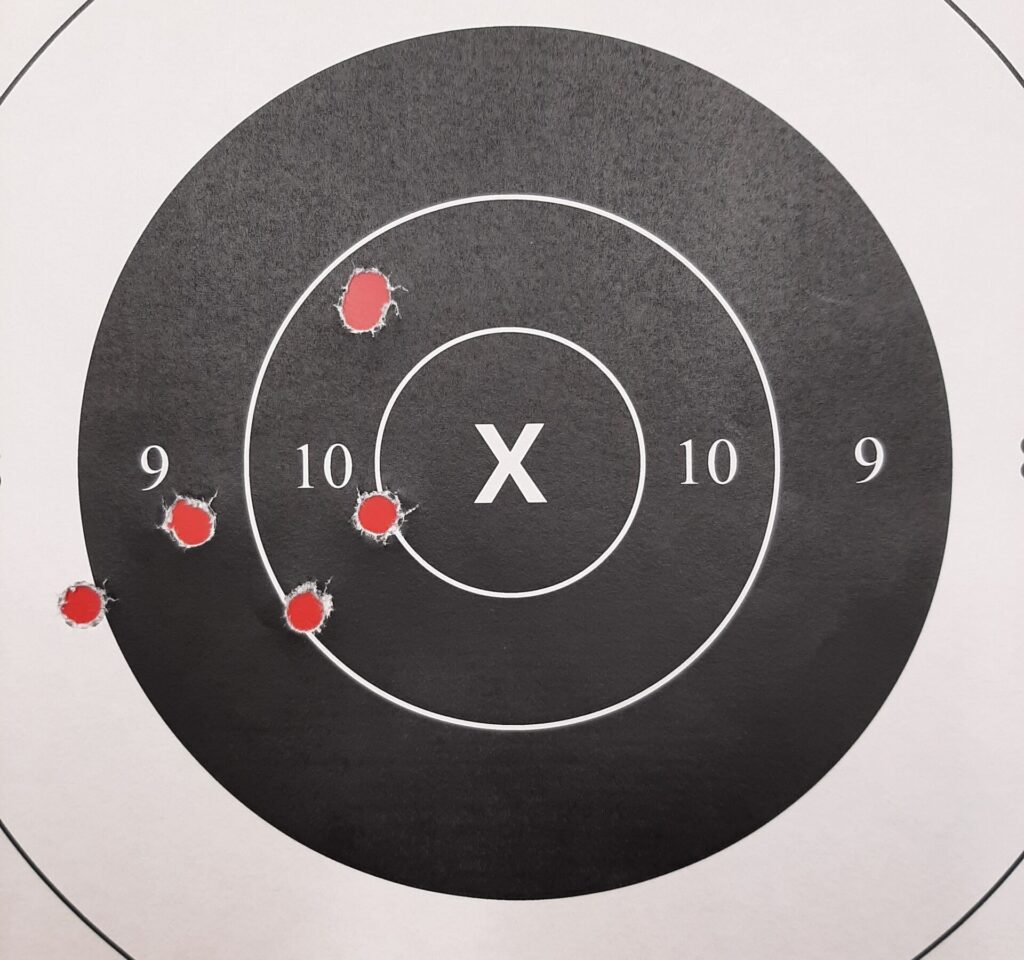
The steel framed gun weighed 24.5 ounces empty, before the optic and plate were mounted, enough to render all the .327 rounds quite shootable. It helps to have the muzzle an inch further from your face when you crank them off, too. The .327 Magnum cartridge produces impressive report and muzzle blast when fired from a short-barreled handgun, particularly with loadings that take full advantage of its 45,000-psi pressure ceiling. This gun is a good minimum size and weight if you plan on shooting quantities of .327 Magnum through it.
.32 HORSEPOWER
There’s a reason that no manufacturer builds an alloy-framed, light weight .327. Ruger’s LCR, so chambered, has a steel frame (like its other high pressure chamberings- the 9mm and .357 Magnum) and weighs 17 ounces with its 1.87” barrel. It’s an unpleasant beast to shoot with .327 ammo; Recoil is stiff, blast is sharp, and the short barrel struggles to ignite all the Magnum’s powder. It usually speckles the shooter with lots of it, instead. I’m not bashing the LCR, it just seems to be more at home with .32 H&R Mags than .327’s.
Shooting .32 H&R Magnums through the 327 Taurus was a joyful experience. The gun’s weight made recoil pleasant and recovery quick. It was easy to deliver rapid accurate fire with every example of .32 H&R Mag that I shot. The gun and cartridge combination should make surgical shot placement realistic for most shooters.
SHOOTING WITH AN OPTIC
Good fortune smiled upon me while perusing the local gun store. I found a used Shield SMS2 red dot orphaned in the optic cabinet, no packaging, but in good working order. Inquiring yielded a fair price, so the optic accompanied me when I left.
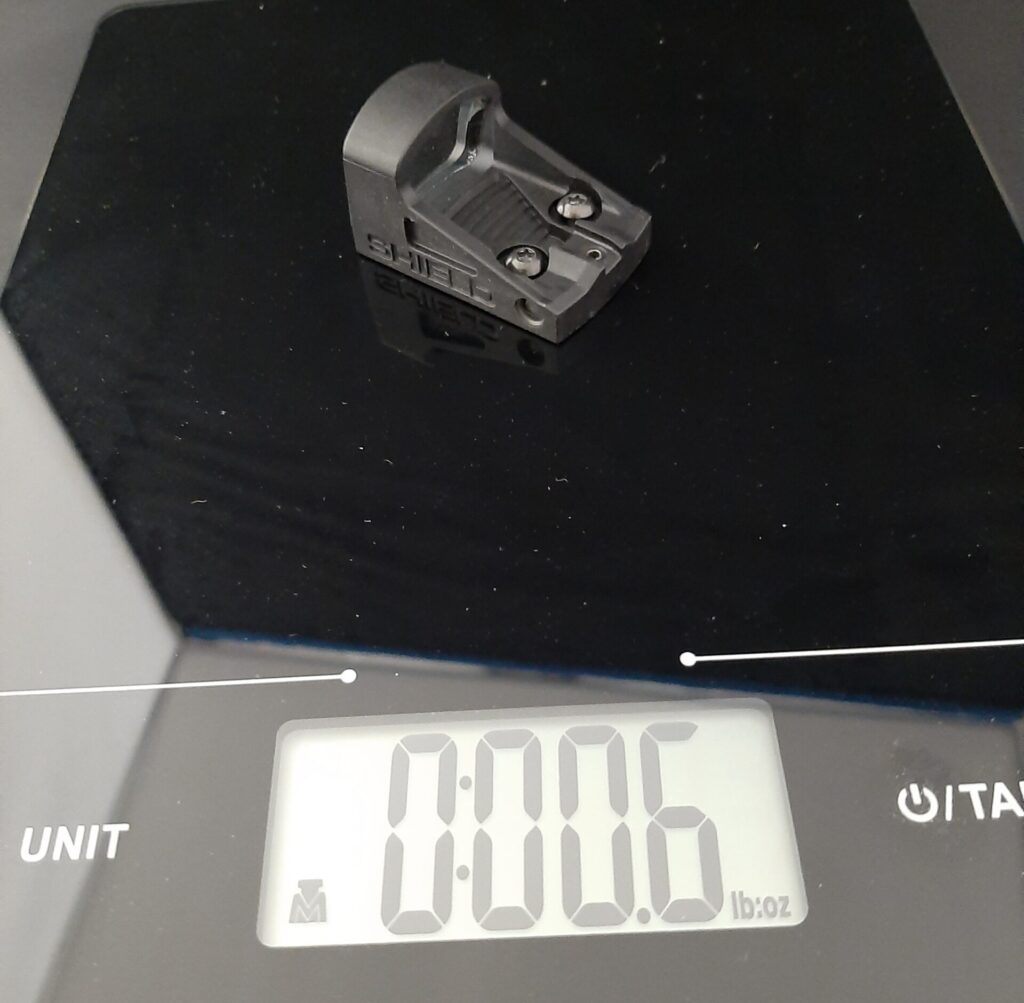
Securing the plate to the gun, and the optic to the plate, was accomplished drama free. The SMS2 body is nylon glass-filled polymer and only weighs .63 ounce with the battery onboard. It has a 4-MOA auto-adjusting red dot that is well suited for the revolver. The curb weight of the empty gun with plate and optic only increased to 25.7 ounces. For reference, an 856 TORO .38 with a Holosun 407K weighs 25.4 ounces.
The next range trip started with getting a rough zero on the optic and fine tuning it along the way. I was shooting seated on a camp stool to get low enough to send rounds over the chronograph on a table. My hands were unsupported, and the NM spring winds were in full effect. In a quest for tight groups, I was staging the trigger horribly. I had one light hit with a Federal .327 Low Reoil Hydra-Shok, and two with Double Tap’s .327 60 grain solid copper HP. All three rounds fired on the second try. I don’t fault the gun or the ammunition for these light strikes; I had removed needed inertia from the hammer fall with the way I was shooting. These were the only ignition issues experienced in the several hundred rounds put through the 327- when the trigger was rolled properly, it always went bang. I wouldn’t hesitate to carry this revolver and trust it for defensive purposes.
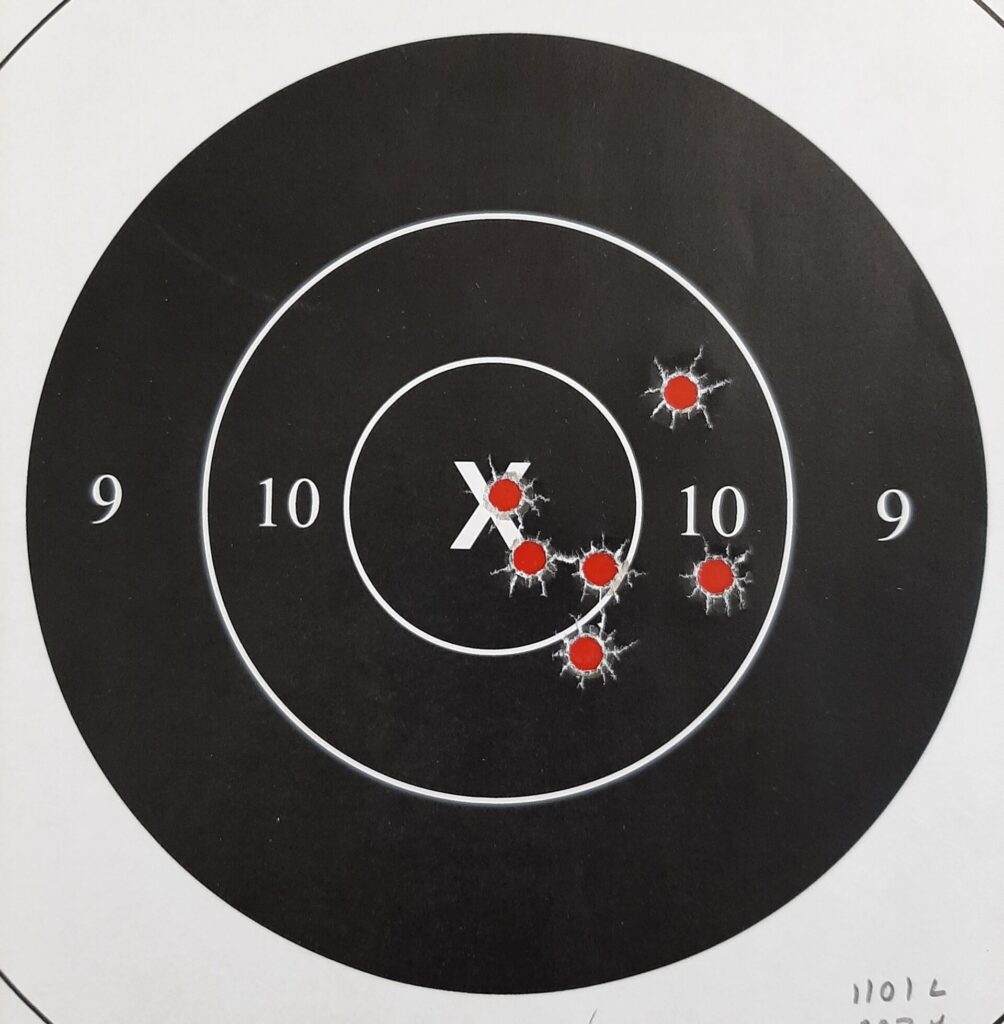
The red dot produced slightly tighter groups at 15 yards than the irons typically allowed. The optic also made it possible to correct the windage deviation and zero precisely for a chosen carry load. The 115-120 grain cast bullets sometimes struck paper slightly off center and appeared to be nearing the outer margin of the rifling twist’s ability to stabilize them. This wasn’t observed with bullets weighing 100 grains or less. This gun was purpose built to be a defensive revolver (not a primary hunting handgun), so I don’t really see that as an issue.
LOADS AND BALLISTICS
The 100 grain Speer Gold Dot delivered over 1400 fps from the 327. It gave an impressive showing of the .327 Federal’s capabilities but is arguably more suited for use in an SP101 or GP100. The Low Recoil 85 gr. Federal Hydra-Shok (1330 fps) or Underwood’s 95 gr. X-treme Defender bullet (1275 fps) were more like “mid-range” .327 Magnum loads. They struck a good balance of controllability and performance in the Taurus.
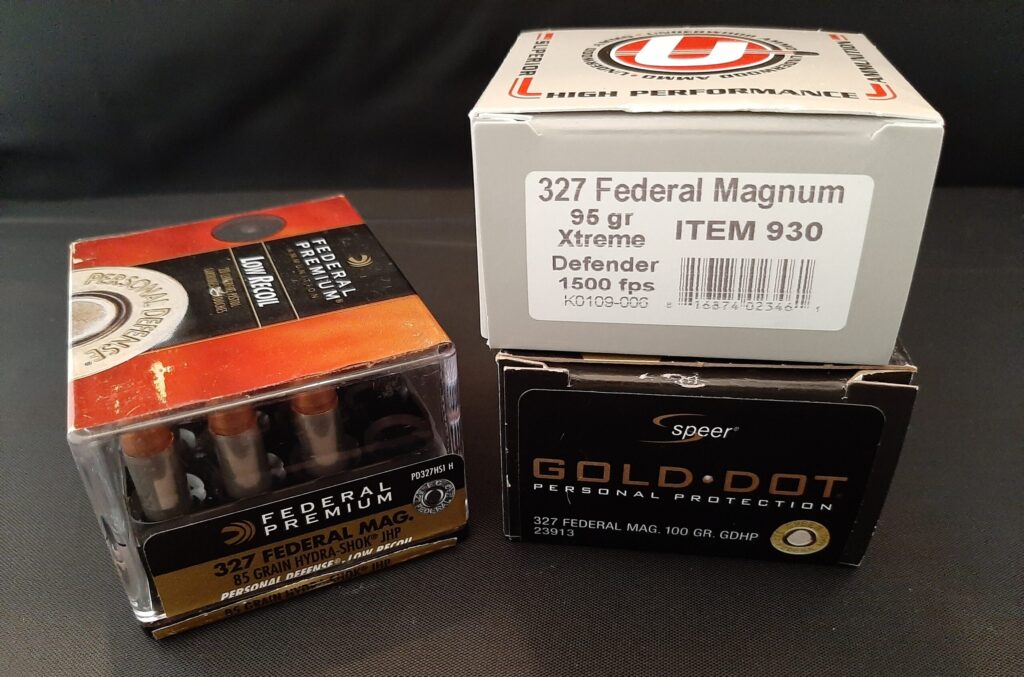
I developed a handload with the Hornady 100 gr. XTP that exited the 3” barrel at 1200 fps: more horsepower than any .32 H&R Mag load but still controllable in the Taurus. That was the load chosen to fine tune the SMS zero.
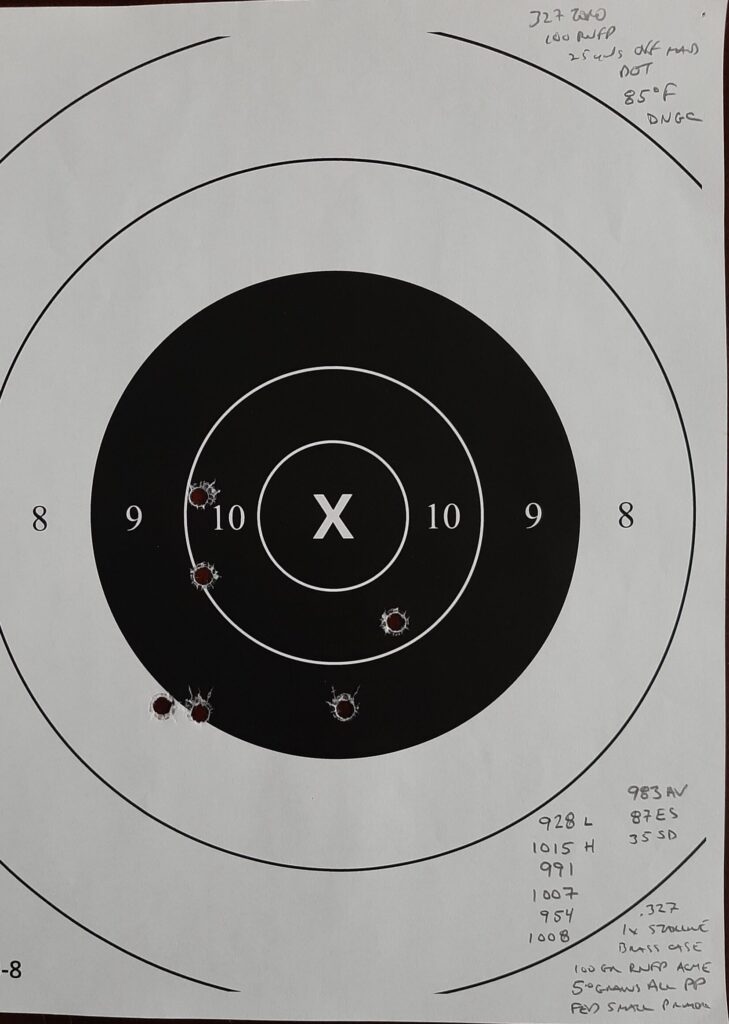
Double Tap loads a 60-grain solid copper hollow point in both the .32 H&R and the .327 Mag, to good effect. The shorter mag generates 1383 fps with this bullet in the Taurus. The .327 version sallies forth at a scorching 1700 fps. The light bullet recoils civilly even with these speeds.
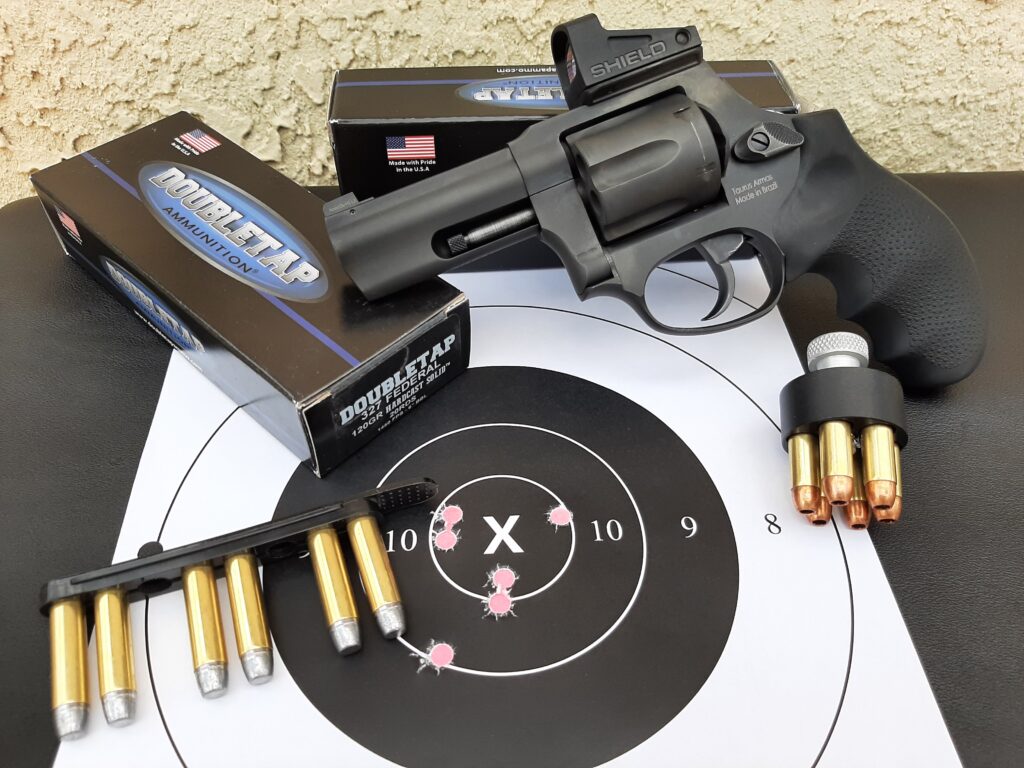
A handload with Acme’s coated 100 gr RNFP in .32 H&R cases loaded to about 950 fps was just right for a practice/field load. It hit the same point of impact as the XTP handload out to about 50 yards.
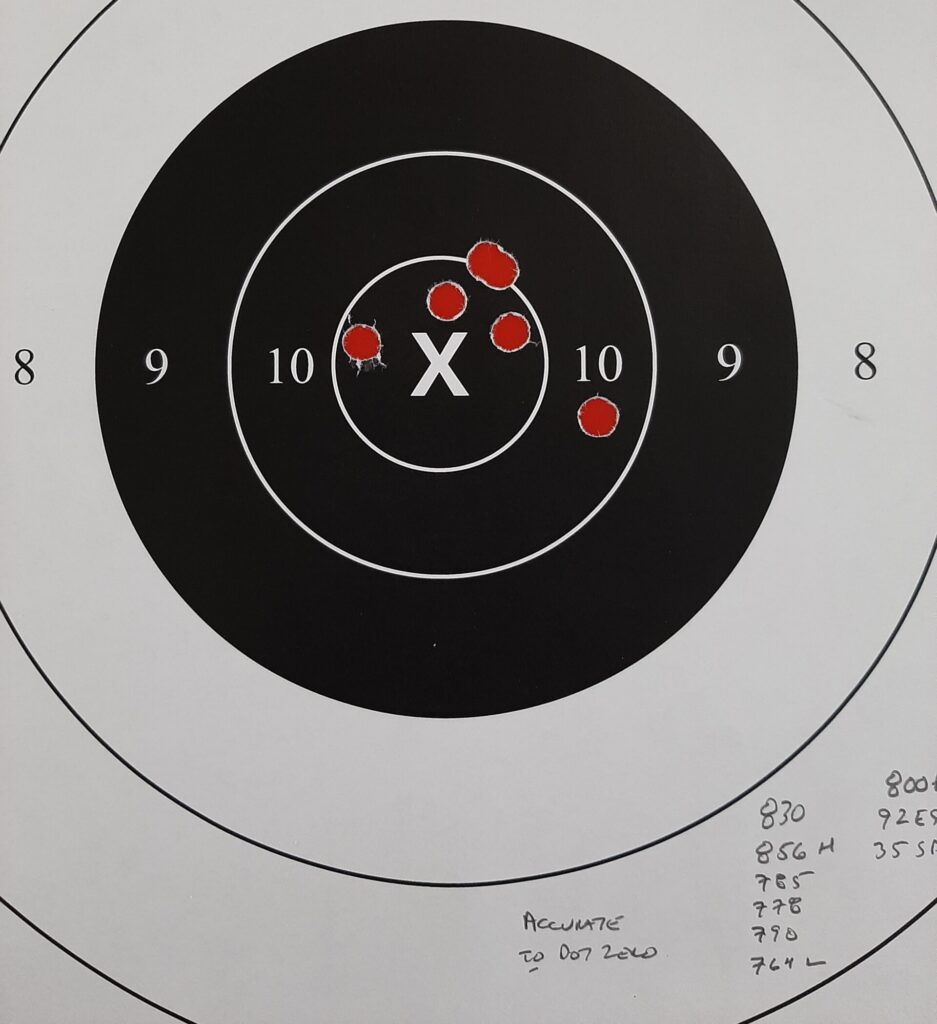
I ran a few .32 S&W Long loadings through the 327 with great results. A factory S&B 100 grain wadcutter hit to the optic zero, grouped well, and gave rimfire-level recoil. A handload with a 98 grain WC averaged 800 fps, and clustered tightly at the point of aim. It would make a respectable defensive load for the recoil sensitive. Loading Missouri Bullet Co’s 78 gr. coated RNs over Trail Boss resulted in a more consistent (if a little slower) load than the same bullet in .32 H&R cases. My free time is now spent loading up piles of these for my daughter to convert to empties this summer.
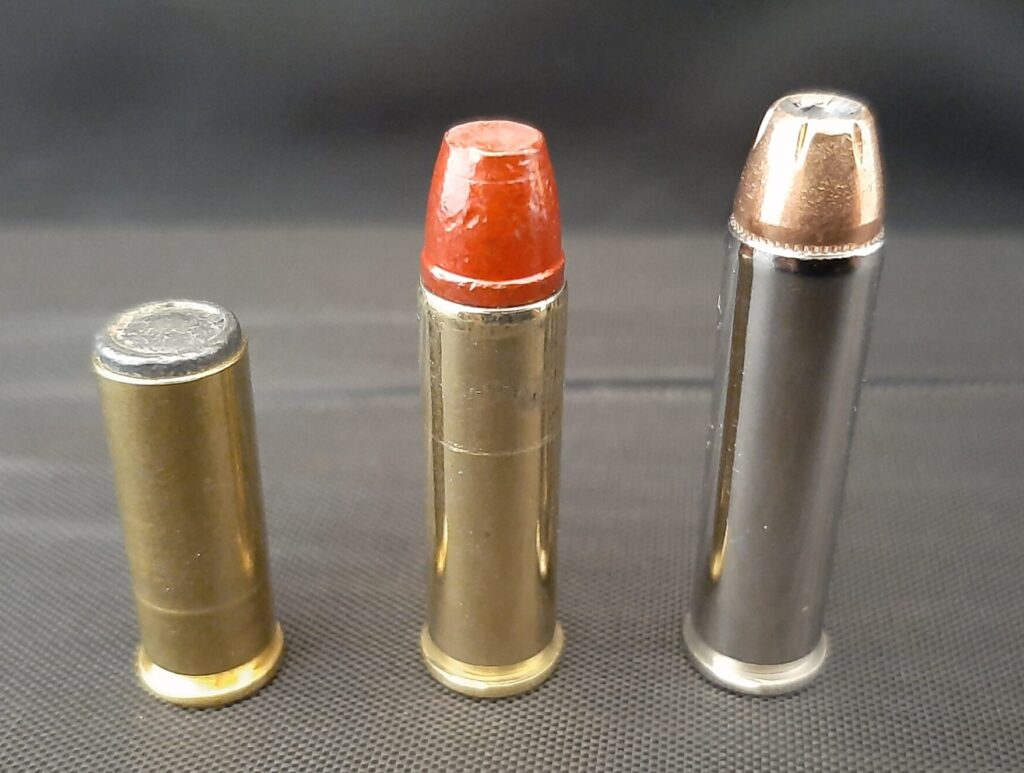
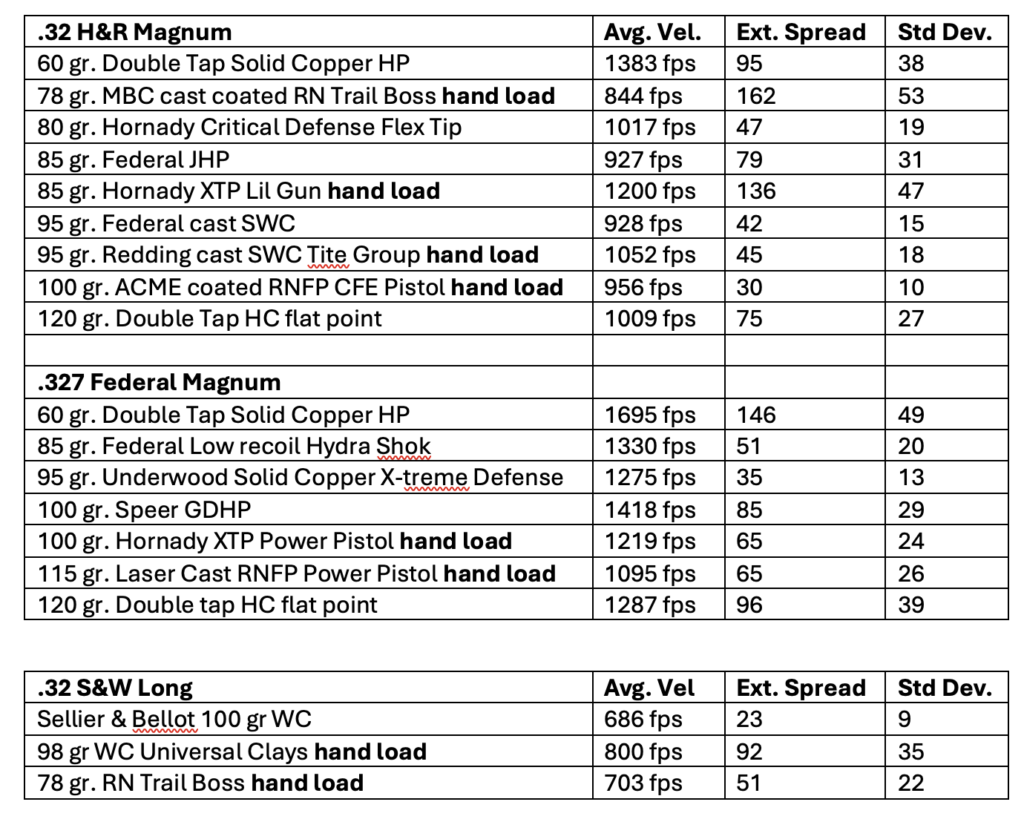
Comparing these velocities to ones gathered from .32 snubs demonstrates the significant increase the extra inch of barrel provides. The velocity jump is typically much more pronounced than bumping up from a 3” to a 4” barrel.
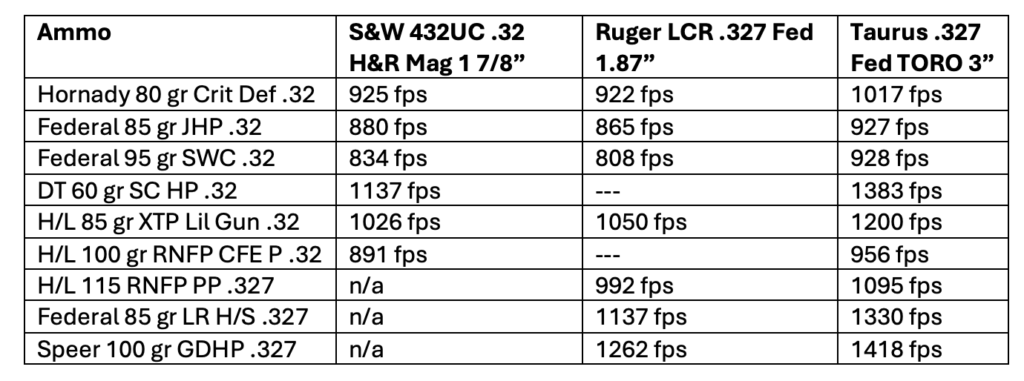
From an energy perspective, the .327 Federal shouldn’t be considered a “mouse gun”. Both .327 loads listed below typically expand to .50 or better and provide optimal penetration in gel testing.

If you’re not already a fan, selecting a .32 does mean increasing your logistical supply train with new calibers. None of the .32 rounds are as readily and consistently available as the .38 Special, and they’re usually more expensive. The .32’s may push you over the edge if you’re considering handloading as your new hobby. That’s not a bad thing.
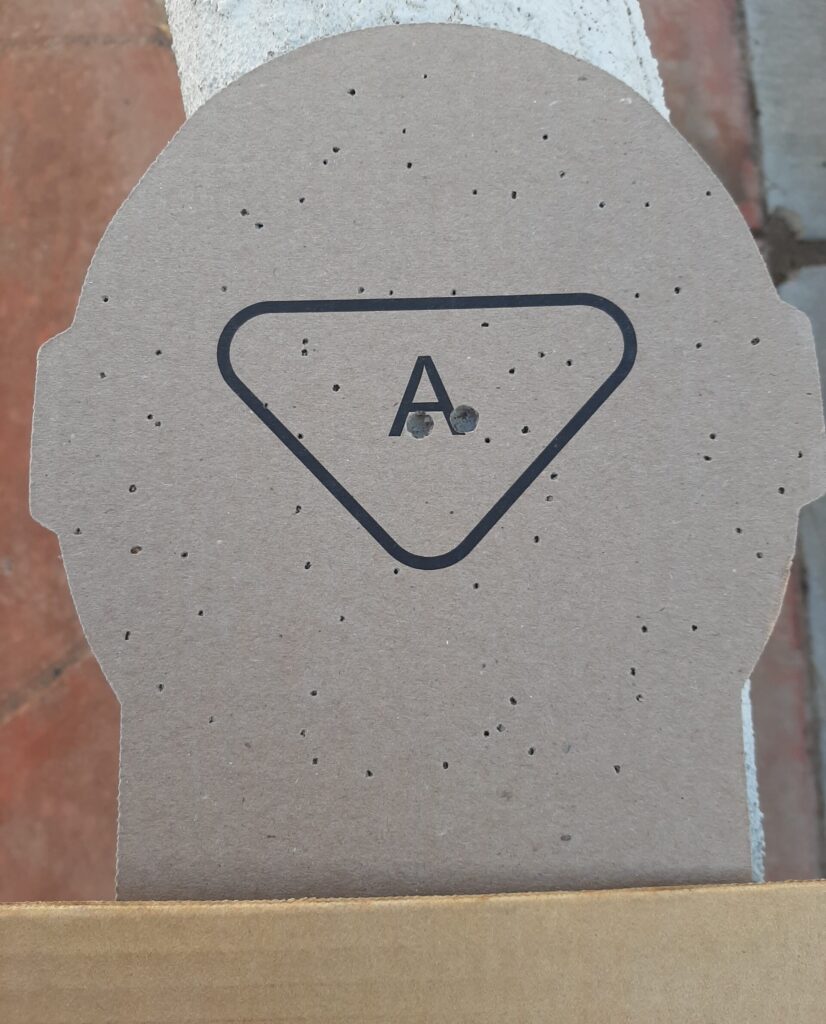
SUPPORT GEAR
Giddings had also confirmed my inquiry about using HKS 32-K speedloaders with the 327. He’d had good luck with them and adopted them as part of his kit for the 327, so I ordered a couple. I’m pleased to report that they worked like they were made for the gun. The 32-K gave reliable, repeatable performance regardless of the case length (.327 FM, .32 H&R, .32 Long).
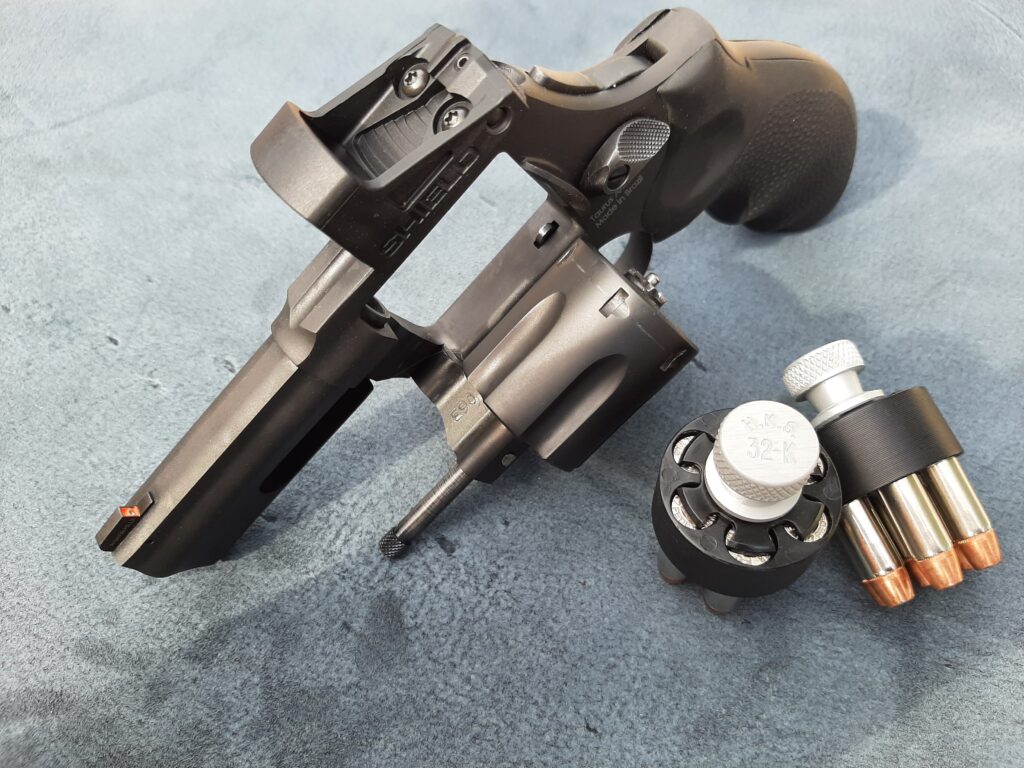
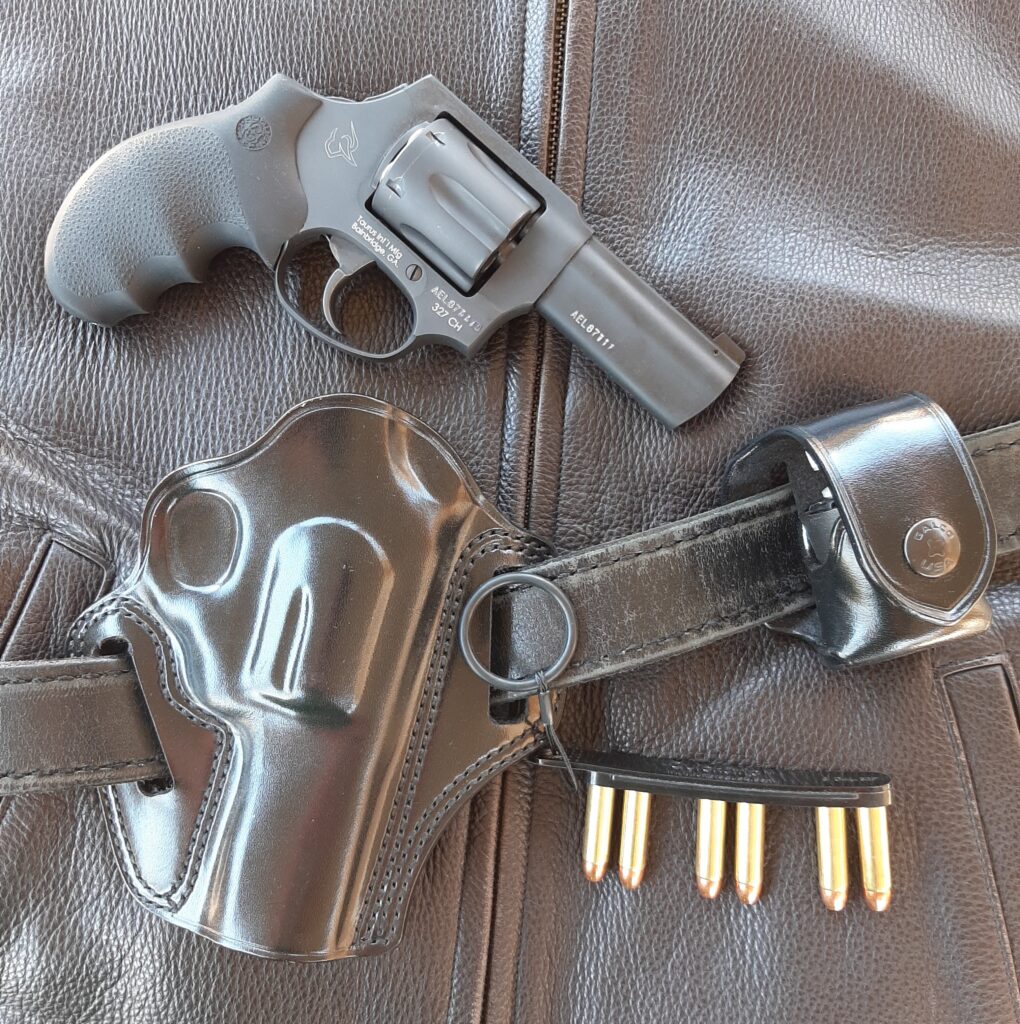
The 327 T.O.R.O.’s charge hole chamfering helped with the use of the loader. The value of this simple modification is hard to overstate. Hopefully, more revolver manufacturers will implement chamfers as a standard feature on their defensive revolvers. Most JHP’s have a rounded ogive that makes them well suited for quick reloads. Your mileage may vary using wadcuttters, SWC’s and the “Phillip’s Head” profile of Lehigh solid copper bullets.
Happily, the Hogue grips gave full clearance to the HKS, even with the longest .327 Magnum rounds.
WORKING WITH THE 327 T.O.R.O.
I ran the Rangemaster Revolver Course with the Taurus, drawing from concealment with a Harry’s Holsters Monocle holster.
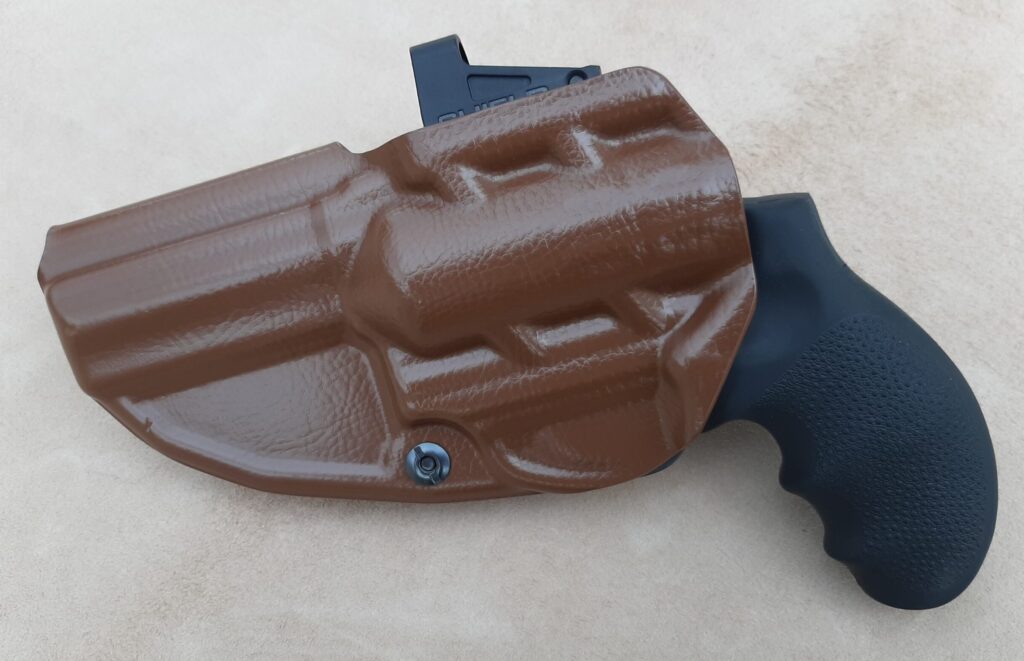
I was a little slow on the first stage, missing time as I searched for the dot. I decided to “shoot the window” and used the outline of the optic if the dot couldn’t be immediately located. This worked well up close until the times were more forgiving. I fouled my draw by including my shirttail in my grasp on the first stage at the 10- yard line. This caused another slight time overage. Other than that, no time penalties. The 327 shot the course clean, keeping all body shots well within an 8” circle. Like the 856 TORO, it shot like a bigger gun and was capable of solid body hits at 25 and 50 yards.
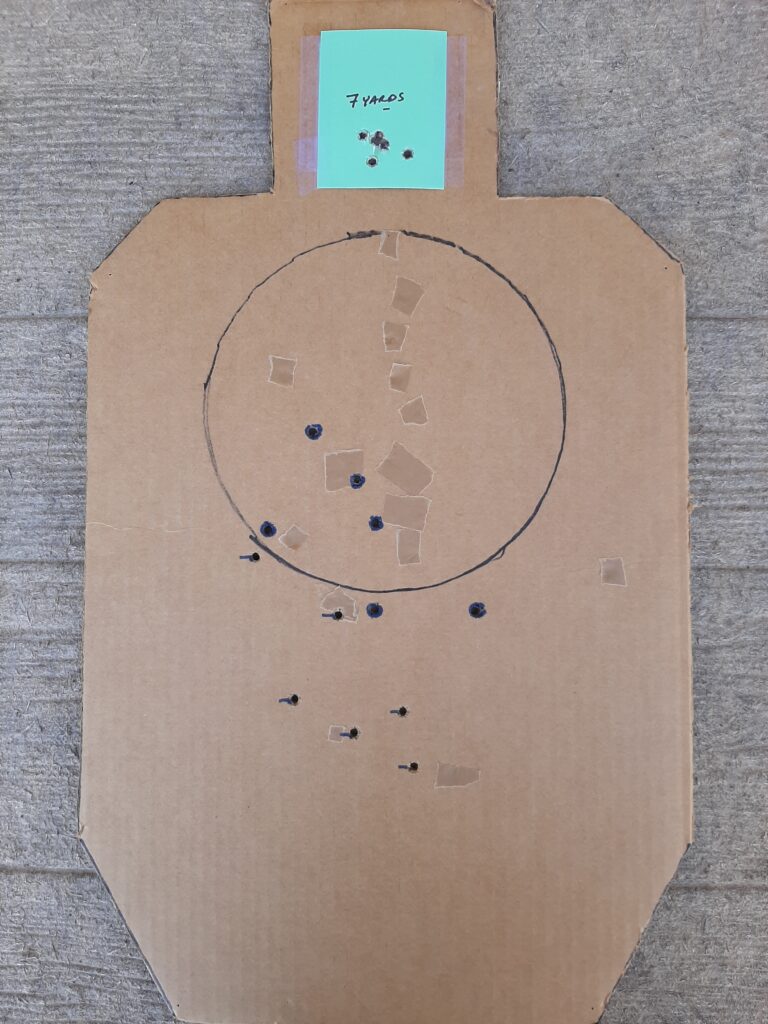
I had removed the optic to take some pictures of the gun near the end of my test. I decided to remount it and stopped by a local indoor range to re-zero. It only required about ¾” of windage adjustment to be back on. The SMS2 reminded me of its worth by consistently making small groups in the compromised lighting of the indoor range.
The visit confirmed a curiosity noted on an earlier range trip. The 120 grain hard cast Double Tap load struck to the 100 grain XTP zero at 10 yards. The .32 H&R version of that bullet hit ½” or so high, but the faster .327 hit dead on. The .327 HC belched smoke noticeably in the indoor range, but it shot like a laser beam. Unlike before, the heavyweight bullets were striking paper cleanly, making nice round holes with no indication of tipping. I’m not sure if the barrel just needed to season or what, but the heavy cast bullets redeemed themselves and performed very well.
IN SUMMARY
This T.O.R.O.’s round count has surpassed 450 rounds, and it’s proven to be a solid performer. It would shine even if it wasn’t a TORO Model, but the fact that you can put a red dot on it makes it that much better. Its size makes it a stellar all day “concealed at waist level” candidate. It weighs enough that it can take advantage of its .327 chambering without punishing the shooter.
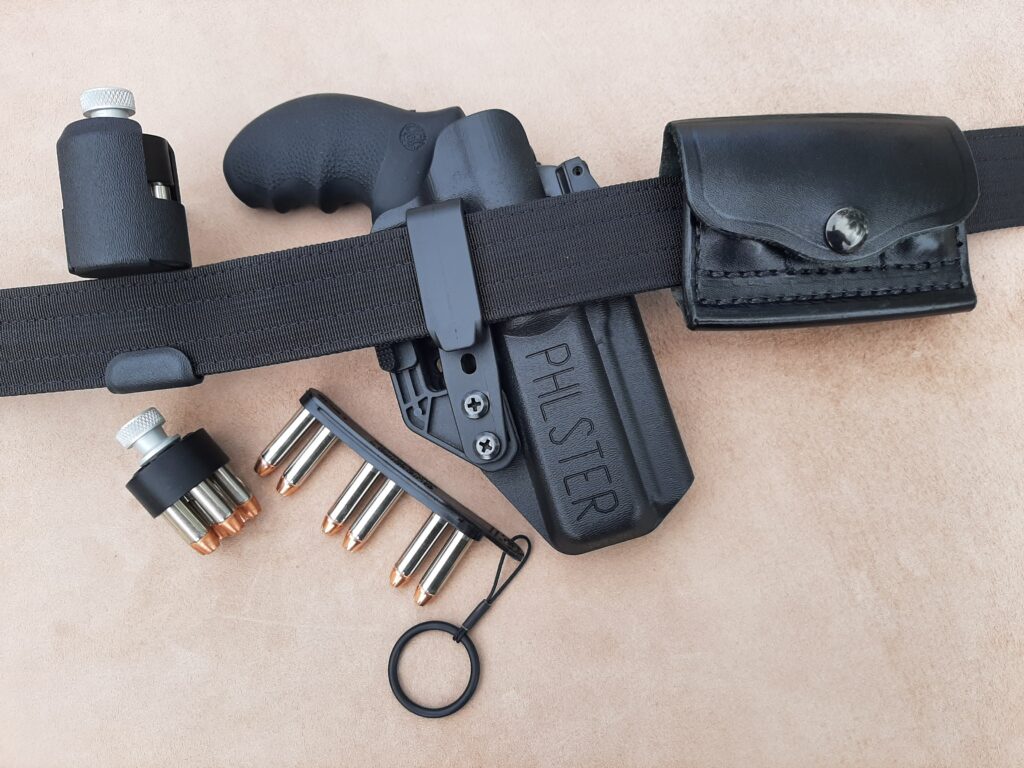
The .327 Federal generates legitimate Magnum energy well over what the .38 Special can achieve. The 327 allows a sixth round onboard where a .357 Magnum like the Taurus Model 605 only holds five. The .327 is much easier to shoot well than a small .357 Magnum. Load it with .32 H&R defensive loads and making solid hits with quick follow up shots becomes even easier. If you need to train or equip a recoil sensitive family member, the .32 S&W Long is perfect for that duty (It’s also just a whole lot of fun to shoot).
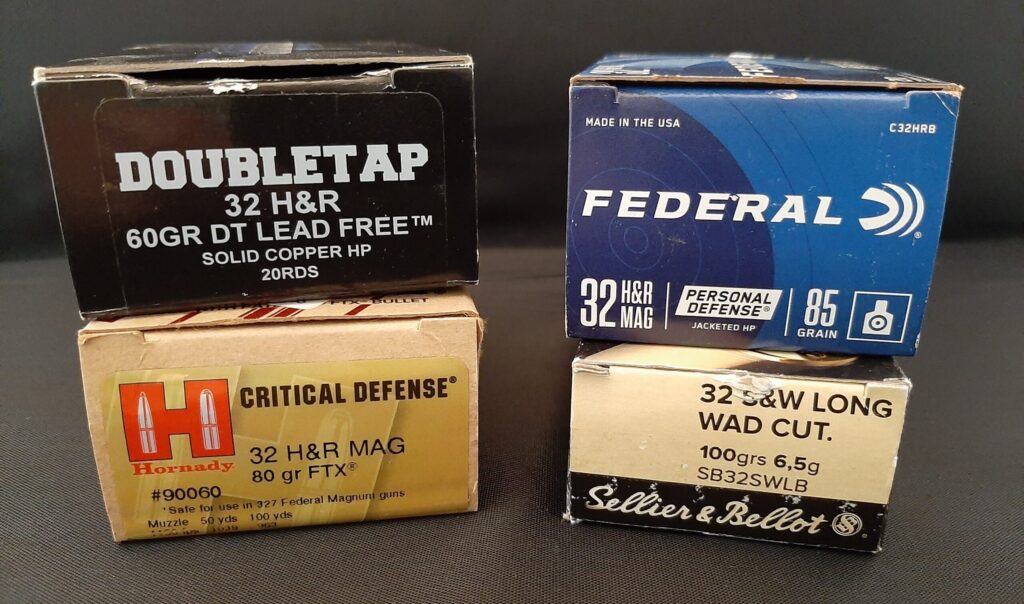
At its retail price of $553.99, the 327 TORO provides solid value. It offers a well thought out list of features and makes a strong case for the .32 caliber defensive revolver platform. This gun makes a lot of sense.

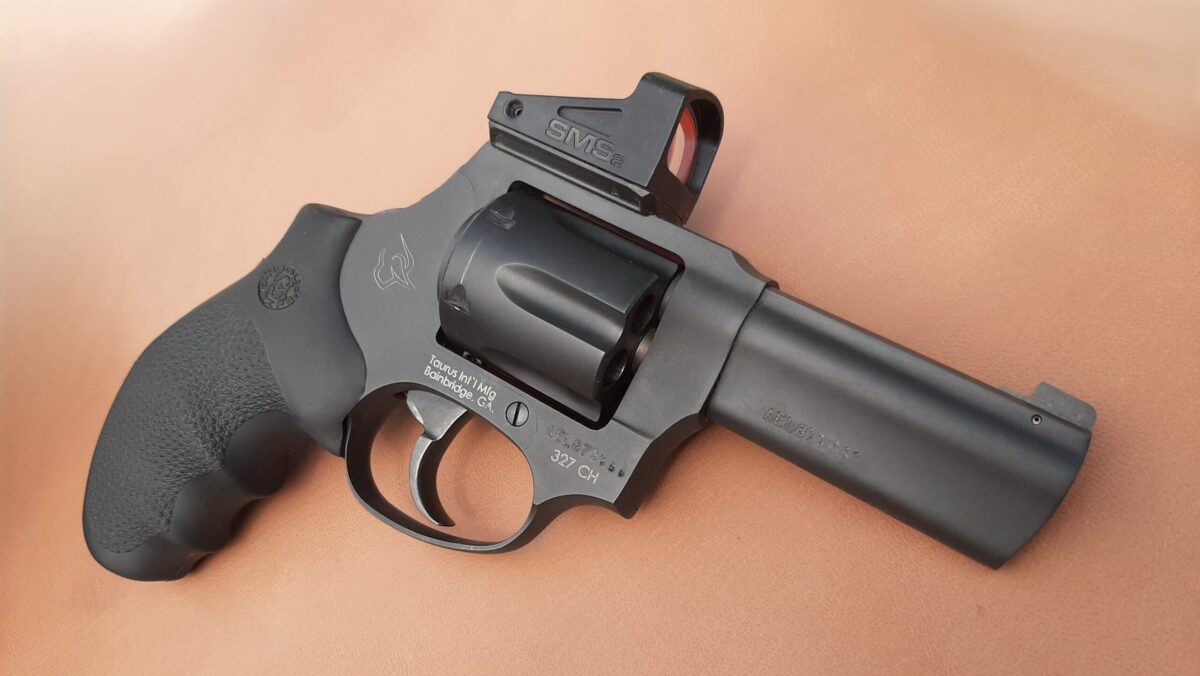
The .32 handgun cartridge family makes a lot of sense to this old RevolverGuy. In J-frame size guns, the rounds often allow a six-shot capability, instead of five, plus you have a wide range of loadings from mild to smoking hot.
The only downsides are price, availability and whether ammo manufacturers will commit to making the cartridges well into the future.
And that .327 T.O.R.O….well, it appears that Taurus is eating S&W’s lunch again.
Agreed, Spencer. .32’s make a LOT of sense. I sure like having that 6th round on board, and you can tailor the ammo to the shooter and the mission. Amen on the ammo. I’m really expecting this wave of .32 interest to carry over into ammo availability and reduced cost, but we haven’t seen it yet. Taurus keeps cranking out new TORO guns that are pretty useful…
I bought a bobbed hammer 2″ 856 this June. I noticed it had chamfered charge holes in the cylinder. Did I get lucky, or is that just the way they make them now, I wonder.
” it always went bang. I wouldn’t hesitate to carry this revolver and trust it for defensive purposes.” Really, that’s what we need to know.
(I’m not at this point looking at a .32. Yet another cartridge to handload for. )
Lee, I really hope that’s the way Taurus is making them now. That would be a huge plus across the board for their small revolvers. I will inspect a few the next time I’m at the LGS.
Yes Sir, when I ran the trigger like we’re supposed to, the gun always worked. The gun proved itself reliable.
Hah! You’re smarter than me. Most of the practice ammo I shoot in the 327 Fed Mag, 32 H&R, and 32 Long are handloads. I spend lots of quality alone time at my reloading bench. My wife suspects I do it to dodge weekend chores, but I have a responsibility to feed these guns!!! 🙂
Great writeup. You could almost have me as a .32 convert – except that I’ve been head deep in the .38 Special since the early 1970s . . . The .327 can at least shoot .32 H&R all the way down to .32 S&W, assuming you can find .32 S&W. A lot of brass type variety, and if you cast your own bullets, you get a lot per pound of lead.
The cap-n-ball .31 revolvers came around in the 1840s, ( the .36 caliber came to life in the 1851 Colt Navy). .32 metallic cartridges (which are actually a .312 diameter bullet) have been around since the late 1870s, so both the 32 and 36 caliber rounds (.38 Special being a .358) have cut their own niches. With the .327, the 3″ barrel is almost a must in terms of giving the powder room to burn.
I would be very curious about pathology reports of bad guys on the receiving end of these .327 loads to see how they perform in real life. Their ballistics appear to be very similar to the 7.62×25 Tokarev pistol cartridge – also loaded rather hot. The hydrostatic and internal traumatic shock of a .327 hollowpoint should likely be very similar to the Tokarev round, or even the 115 grain 9m/m +P+.
My reservation with the .327 lies with its operating pressures – 45,000 psi in each chamber of a K-frame size revolver puts quite the strain on the cylinder, as well as the frame and especially the barrel’s forcing cone.
Thank you, S. Bond. I understand your loyalty to the .38 Special, but you speak wisely about the .32’s for a .38 guy! That extra inch of barrel is huge for getting the .327 to stretch its legs. I think your Tok comparison is probably spot on. Also, your worry about the stress with max pressure ammo is likely valid. I fed this one the angry .327 stuff sparingly; I really think a “mid-range” .327 loading would sell well. Hornady could offer a 100 gr. XTP @1200 fps that would be just the ticket in this gun. It would also make my wife happy, because I could be burning tumbleweeds and securing dog excrement instead of slaving over my reloading bench rolling my own .327’s to that spec. On second thought, take your time with R&D, Hornady!
Hah! Yes, take your time, boys!
I have the snubnose 327, not the TORO, and I’m pretty much in agreement. A good, basic revolver in an excellent (IMO) chambering. Even in a snub, I do not find the .327 Federal unmanageable; but I do feel .32 H&R Magnum is the sweet spot of the .32s.
It strikes an almost perfect balance of recoil, noise/blast and power in a self-defense cartridge; especially for a compact revolver.
I find 85-100gr bullets in any of the .32s (.32 Long, .32 H&R and .327) all shot POA in my Taurus.
Hey Axel, it sounds like our experiences have been similar. Factory .32 H&R stuff through this Taurus was super pleasant to shoot. It’s heavy enough to shoot the lighter bullet .327 rounds if you feel like you need them, too. I’m glad to hear that the 2″ gun is regulated for that bullet weight range- count it as a plus for both guns that they shoot them to POA across the velocity spectrum the various .32’s cover as well.
Kevin:
That was my assessment, too, of the .32 ammo choices, that is, the .32 H&R would be the best cartridge for me. With all my Magnum revolvers, I generally stick with the “Special” and plus-P loads. Those save me money and prevent excessive wear and tear on the firearms.
Yes Sir, Spencer, Axel’s “sweet spot” nomenclature was proper. Shooting Specials in the Magnums saves money, wear on guns, and on shooters. I don’t mind lighting off full magnums in L frames (or Colt Pythons) and N frames but scaling it back in old K frames (and certainly J frames!) just makes sense most of the time. The .32 H&R Magnum is a beautiful thing!
Another home run Kevin!
Your reviews are complete, non biased and most important trusted.
Thank you, Tony! I’m grateful for that praise, Sir. I surely get as much good info here at RG from other writers and readers as I give. Yours being at the top of that list.
Really great write up Sir! I am once again intrigued by these newer Taurus offerings. I have been a lifelong fan of .357mg and .38spec that I too have a hang-up about adding another caliber to the mix to keep ammo for and reloading componants. When I am ready to give Taurus a try, I suspect it will be a .357 or .38spec. I really do appreciate your time and energy that you devote to the .32 and sharing your findings. I also like seeing the features of these Taurus revolvers because it definately shows a shift in quality care that you might not see with other offerings.
Thank you, Mark! Taurus is putting out some really useful, practical guns and they merit a hard look. I carry an 856 UL more than any other gun these days, with no complaints. This 327 makes a pretty good case for the .32’s, though…
Thanks for reviewing this revolver!
I already have a Ruger LCR in .327, but I’m tempted by this affordable Taurus with an extra inch of barrel length.
You’re welcome, Bradley! I think the two together make a really respectable pair; waist gun and backup gun. The LCR can do primary duty as clothing options dictate, but the Taurus is nearly a service gun. The 3″ barrel squeezes a lot more out of the .327 Magnum.
Great review of the Taurus .327 Toro!
I was seriously entertaining the purchase of the new six shot S&W .32 H&R Magnum that Mike was instrumental in bringing to the market.
My wife’s grandfather carried a .32 caliber Colt with a 3″ barrel during and after his NYPD career.
Much like fellow Revolver Guy, s. bond, I also am quite partial to the .38 Special. I’ve carried a pair of Smith .38 caliber revolvers while on patrol and now in retirement.
I recently toured my local gun shop with an inclination towards a six shot .32 revolver.
Well, I spied a 7 shot S&W 242 Titanium revolver with a 2 1/2″ barrel that’s rated for .38 Special +P ammunition. When my friendly dealer knocked 15% off the asking price, that sealed the deal.
Those fine .32 revolvers will remain available for like minded folks looking to increase capacity while having the flexibility to tailor the horsepower of their firearm.
Thanks for an outstanding article!
What a great find! A 242 is a real unicorn, and I’m glad you jumped on it. The .32s will still be there later, when you want them.
Thank you, Opa! I got a chance to mess around with one of those S&W UC .32’s, I wrote some thoughts down about it and they will show up here pretty quick. Your wife’s grandpa was a forward thinker, his hardware choice is coming back into fashion! I can’t blame you for altering your gun store mission when you bumped into that 242. What a good score!!! Hopefully the popularity of these little .32 guns will help convince S&W to keep them coming and bring out some Airweight K frames (and an encore issue of that 242!!!) again. Let us know how that Model 242 shoots.
Nice review, Kevin. Been thinking a steel-frame Taurus 327 might be an even better basic defense revolver for recoil-sensitive shooters than the S&W 432 UC (which I like quite a lot). Taurus has a nicer price and its reputation for quality and service is equal to or better than “The Majors.” If only we could find a way to make sure beginners aren’t ruined by someone filling their cylinders with 327s instead of 32 H&R or Long wadcutters. Thanks again.
Thanks, Michael! I think you might be right on that. The 3″ steel gun is an easier gun to shoot with the less sporty calibers it’s capable of chambering. 32 Long wadcutters were exceptionally accurate and gave barely perceptible recoil. An easy combination to help deliver good hits for the uninitiated or recoil sensitive. The Taurus delivers great features for the price, and they’ll fix it quickly if you have any drama. It’s a great choice for a small revolver to do many chores.
Thank you for this review, Kevin. I’ve had my eye on 327/32 for a few years as a defensive round, following some videos from Lucky Gunner on the subject. But I knew from BallisticsByTheInch that, counterintuitively, 327 would perform poorly out of a short barrel like the LCR. This Toro changes everything, since you get an optic, 3 inch barrel, and 6 rounds of reliable yet adjustable power. On top of that, it’s affordable and available in many places, and you won’t feel bad if it takes some wear from being carried. I just purchased one for an excellent price from my LGS and look forward to getting it to the range. Your review was instrumental in convincing me it was worth the investment.
Thanks, Ben! I’m glad it was a little helpful to you. The 327 makes an extremely handy and efficient carry gun for all the reasons you mentioned. I don’t think the Taurus will disappoint! Let us know how it does for you at the range.